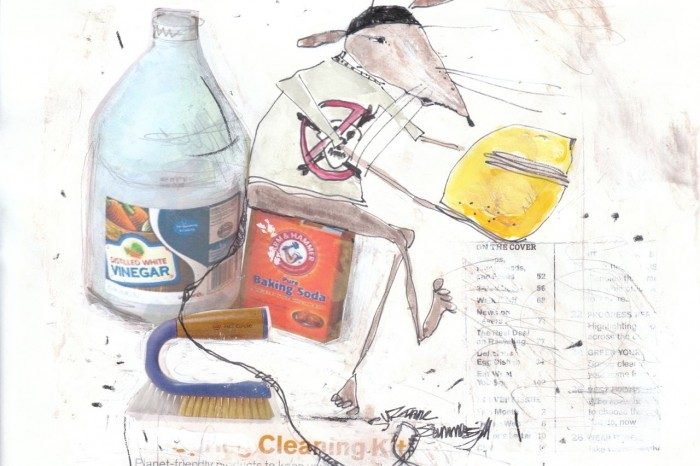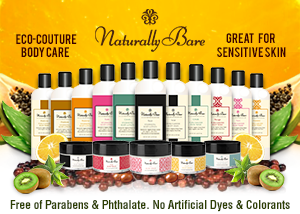Cleaning Green 101: How to Read Product Labels

Illustration: Created for GreenCleaningMagazine.com by Three Green Rats, An Eco Tale co-author and illustrator Suzanne Summersgill
If you’ve thought about greening your lifestyle but didn’t know where to start, begin with green cleaning. It’s a great first step in embracing a sustainable lifestyle. Cleaning green not only saves you money, you’ll feel healthier. Green cleaning products do a good job, they don’t pollute the planet, and they leave your house smelling like fresh air and sunshine.
The big difference between synthetic commercial cleaning products and green cleaners is that synthetics are typically made by humans from chemicals in a laboratory and green products are most often made from substances derived from plants. You can tell synthetic cleaners (with their artificial odors and lingering fumes) are harsh because they redden your hands, make your eyes water or your nose run, and leave you feeling headach-y and fatigued. Commercial cleaners are too strong for household use. We need gentler products in our homes.
We’re beginning to learn just how harmful exposure to toxic cleaning products can be. They are the leading source of air pollution in our homes, according to the Consumer’s Guide to Effective Environmental Choices. Exposure to many of their ingredients has been linked in studies to cancer, neurological disorders, allergies, and psychological maladies.
At the same time these synthetic chemicals are harming our bodies, they are also polluting the planet. The phosphates, nitrates, and borates present in commercial detergents, which get washed down the drain, essentially “kill” lakes and streams by causing algae to grow out of control. Toxic waste is a severe problem. The average home generates over 25 pounds of hazardous waste each year, much of which can be attributed to cleaning products.
The first lesson in green cleaning is learning how to read labels. Because the words “nontoxic” and “natural” have no regulated or legal definitions, they mean nothing when applied to household cleaners. In addition, the word “organic” means one thing when applied to food (where it means grown without synthetic pesticides or fertilizers), and another when applied to chemistry (where it means carbon-based, a type of compound that can be harmful to humans).
Deciphering the labels of cleaning products is trickier than reading food labels because the law does not require that all cleaning-product ingredients be listed. Trade secrets are exempt, as are inert ingredients, so consumers have little to go on beyond such mandated signal words as danger, warning, and caution, which warn of one-time acute exposure, not long-term chronic exposure.
When investigating whether a company has green credentials, look for these words on the label:
- Biodegradable
- Plant-based
- Hypoallergenic
- Nonflammable
- Contains no phosphates
- Contains no chlorine
- Does not contain petroleum products
- Formulated without dyes or fragrances
The switch to eco-friendly cleaners needn’t be expensive. Chances are you’ll use fewer, more concentrated products. Try experimenting with a few reputable brands until you find one you like. In addition, you can check the details and safety ratings on thousands of cleaning products on the Environmental Working Group’s Guide to Healthy Cleaning, an easy-to-navigate database.
Searching out eco-friendly, healthier cleaners with integrity is worth the extra effort because your home is a place where you can truly take control. By switching to healthier cleaners, you not only make your home a safer place to be, you do your part to make the earth a healthier place for all living things.
BIOS
Linda Mason Hunter is a pioneer in America’s green movement. Among her 13 books are The Healthy Home: An Attic-To-Basement Guide (published in 1989), Green Clean (2005), and Three Green Rats, An Eco Tale (for ages 7 to 11 “and precocious adults”).
Suzanne Summersgill has been contributing to the eco movement for the past 25 years in her native city of Vancouver, British Columbia, where she occasionally hosts pop-up gallery shows. She is the co-author and illustrator of Three Green Rats, An Eco Tale.



May 6th, 2014 at 5:46 pm
[…] From Ink Pinn Press, first published in Green Cleaning Magazine […]
February 11th, 2016 at 5:10 pm
[…] friendly formulations at any natural grocery store, and even in many mainstream stores. Check labels for nontoxic ingredients, and browse lists of tested green products. Better yet, try making your […]